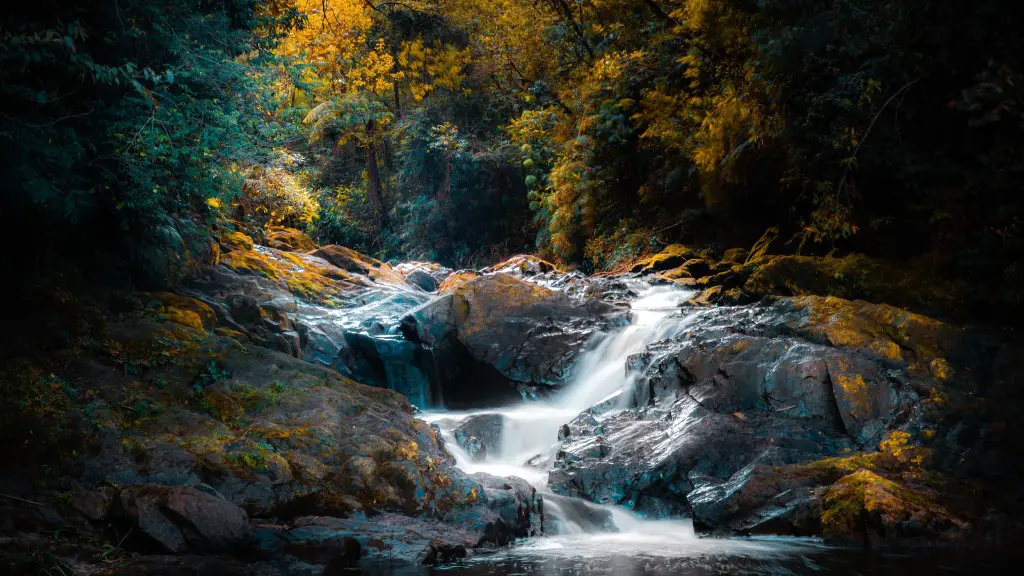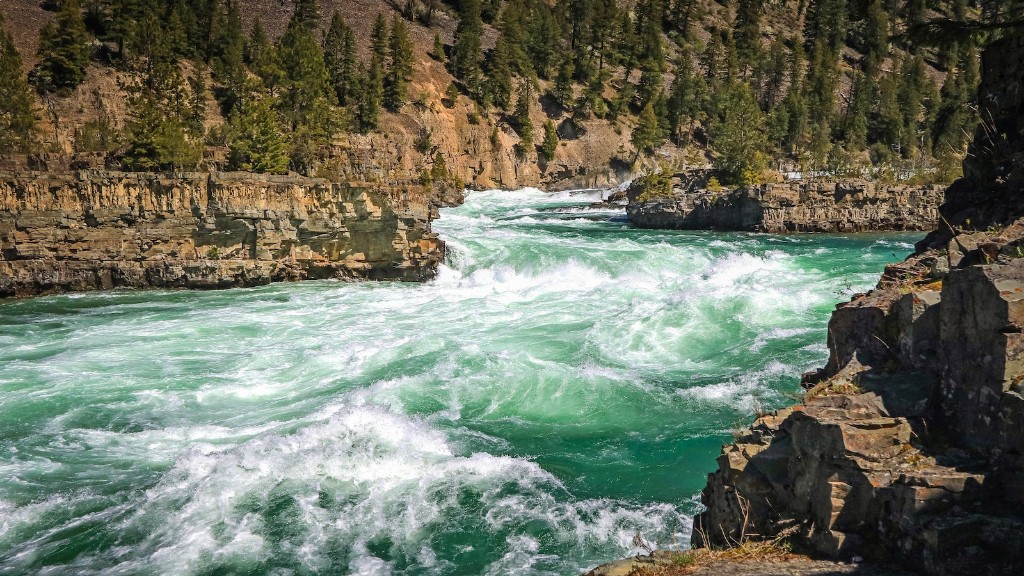Where Did the Yangtze River Come From?
The Yangtze River is one of the longest and most famous rivers in the world. It originates from the glaciers of the Qinghai-Tibet Plateau in the Tibetan Autonomous Region, then meanders for over 6,300 kilometers through China before reaching the East China Sea. But how did it come to be?
Brief Overview of the Yangtze River
The Yangtze River is the third longest river in the world, behind the Nile and Amazon rivers. It is the longest river in Asia and the longest to flow entirely within one country.
The river passes through nine provinces and municipalities – Qinghai, Tibet, Sichuan, Yunnan, Chongqing, Hubei, Hunan, Jiangxi and Shanghai. As it travels through these regions, it forms the world’s largest delta near its mouth, which spans 40,000 sq km and is home to over 40 million people.
Over the centuries, the Yangtze River has played a crucial role in China’s economy, culture, and politics. It’s an important source of irrigation, transportation, hydropower, and fishing for millions of people living in the basin.
Where Did the Yangtze River Originate?
The exact origins of the Yangtze River are still uncertain, but there a few theories. One theory suggests that the river is the result of a natural formation, while another suggests that it is the result of human-induced sedimentation.
According to a study by the National Natural Science Foundation of China, the Yangtze River formed due to the combination of several tributaries as well as glacial meltwater about 18,000 years ago during the Quaternary Period. The study also suggests that glacial meltwater from the Qinghai-Tibet Plateau is the primary source of the Yangtze River.
Although it has gone through many changes over the years, the Yangtze River still runs from its source in the Tibetan Autonomous Region to its mouth near Shanghai. It is an amazing feat of nature and a source of pride for many Chinese people.
Effects of Human Activity on the Yangtze River
Today, the Yangtze River is facing numerous environmental threats due to climate change and human activities. For example, agricultural and industrial pollution have caused the river’s water quality to deteriorate, leading to algal blooms, fish die-offs, and polluted drinking water.
To combat these issues, the Chinese government has implemented a number of measures such as the Three Gorges Dam, the Yangtze River Management Ordinance, and the Protection of Yangtze River Act. These measures are intended to promote sustainable development, protect the environment, and reduce pollution levels in the river.
In addition, the Chinese government has pledged to invest heavily in renewable energy, clean technologies, and other eco-friendly initiatives to reduce the impact of human activities on the Yangtze River and its ecosystems.
The Impact of Climate Change on the Yangtze River
Climate change is having a significant impact on the Yangtze River and its surrounding ecosystems. According to a recent study, the melting of the glaciers in the Qinghai-Tibet Plateau has caused the water flow of the river to increase significantly. This in turn has caused flooding, changed ecological environments, and threatened the habitats of a number of species living in the basin.
In addition, climate change is causing rising sea levels, which is further threatening the habitats of a number of species living near the Yangtze River. This could eventually have devastating effects on the entire ecosystem of the river and its surroundings.
The Chinese government is taking a number of steps to address the impact of climate change on the Yangtze River, such as promoting sustainable development and investing in renewable energy sources. However, more still needs to be done to protect the river and its ecosystems.
Protecting the Yangtze River for Future Generations
The Yangtze River is an important part of Chinese history and culture, which is why it is so important to protect it for future generations. It provides an important source of water for millions of people living along its banks, and is home to a plethora of rare and endangered species.
To protect the river and its ecosystems, the Chinese government has implemented a number of measures, and has pledged to invest heavily in renewable energy and other eco-friendly initiatives. In addition, international organizations such as UNESCO are working with local governments to develop and implement environmental policies that are aimed at preserving the Yangtze River and its ecosystems.
The Yangtze River is an incredible feat of nature and an important part of Chinese history, and it’s up to all of us to ensure that it survives and thrives for generations to come.
Powerful Symbolic Nature of the Yangtze River
In addition to its technological, economical, and ecological value, the Yangtze River has immense symbolic value for many Chinese people. It’s a symbol of wealth and power, national unity, and even immortality. It figures prominently in Chinese literature, poetry, and art.
The Yangtze River is also the birthplace of numerous ancient Chinese cultures, including the Sanhong, the Han, and the Tang. Its deep-rooted connection to the Chinese people means that it is seen as a powerful symbol of Chinese culture and identity.
For thousands of years, the Yangtze River has been a source of inspiration and a source of sustenance for the Chinese people. It’s a symbol of timelessness and resilience, and a testament to the power of nature.
Yangtze River’s Role in China’s Global Ambitions
In recent years, the Yangtze River has become a symbol of China’s rise to global power. Chinese leaders see its development as a way to promote economic growth, political stability, and global competitiveness.
The Chinese government has invested heavily in infrastructure projects such as the Three Gorges Dam and the Shanghai-Nanjing Expressway, which are intended to spur economic growth and increase China’s global influence.
In addition, the Chinese government is planning to extend the Yangtze River Economic Belt, a project aimed at connecting the 11 provinces and municipalities of the Yangtze River Basin and promoting economic development in the region.
The Yangtze River is an important part of China’s past, present, and future. It’s an amazing feat of nature, a symbol of Chinese culture and identity, and an important source of economic growth for the Chinese people.
Social Impact of the Yangtze River in China
The Yangtze River is an important source of water, food, and transportation for millions of people living in the basin. Over the centuries, it has been an integral part of Chinese culture and identity, and has helped to shape the social and economic structure of China.
For example, the river has played an important role in promoting economic development and trade. It has allowed farmers to irrigate their crops, fishermen to ply their trade, and merchants to transport goods. In addition, the rich biodiversity of the river has allowed for the development of a unique and vibrant culture in the region.
Today, the Yangtze River is an important part of modern Chinese society. It is a source of pride, a symbol of resilience, and a reminder of the power of nature.
Conclusion
The Yangtze River is one of the longest and most famous rivers in the world, and one of the oldest too. Its origins are still unclear, but it is believed to have formed from the combination of several tributaries and glacial meltwater about 18,000 years ago.
Today, the Yangtze River is facing numerous environmental threats due to climate change and human activities. However, the Chinese government is taking a number of steps to protect the river and its ecosystems.
In addition to its ecological importance, the Yangtze River is a powerful symbol of Chinese culture and identity. It has been a source of power and unity for thousands of years, and is now seen as an important part of China’s global ambitions.
The Yangtze River is a miracle of nature and an important part of Chinese history and culture. With the right protections in place, it is sure to remain an important part of Chinese society for generations to come.





